Happy St. Joseph’s Day! March 19th is a big day for Italians celebrating their patron saint. It’s an even bigger celebration in Sicily where traditionally food was given to the poor. You don’t have to go to Sicily for the feast and you don’t have to be Sicilian (we’re Neopolitan). We went to Bar Eolo on 7th Ave. and 21st St. in Manhattan. They explain their name –
“According to Homer, Eolo—Italian for Greek mythology’s Aeolus, ruler of the wind— lived on the volcanic Aeolian islands off the north coast of Sicily and was a favorite among the Greek gods.”

The celebration was last Sunday and here’s what they served –
The entertainment was great too, supplied by a Sicilian folk trio featuring Michela Musolino.
Eolo’s next event is an Easter Sunday lunch.
St. Joseph is the patron saint of Sicily and March 19th is his feast day. This recipe is in honor of all my Sicilian friends who celebrate his day with this traditional dish. This is a basic recipe and I’m sure everybody’s grandmother makes it a little differently but if you’ve never made it before this is a good start.
For a variation on this recipe and a funny story about cooking rivalry, click here – La Cosa Nostra.
Pasta Con Sarde
Preparation:
Boil the fennel in 4 quarts of salted water for 10 minutes then drain, saving the water to cook the pasta, chop the fennel and set aside.
Fry onion in oil with salt, black and red pepper. Add anchovy to onions and dissolve. Cook onions at a low heat until soft but not brown. Add fennel to onions and mix thoroughly. Add pinoles and rehydrated raisins to sauce. Keep heat low.
Dissolve saffron in ½ cup of warm water. Add some to pasta water and the rest to the sauce.
Cut the filets into four pieces, raise heat, add to the sauce and cook for a few minutes.
For the pasta: Cook the buccatelli in the water that you used to boil the fennel. Add the cooked pasta and 1/2 cup of the pasta water to the sauce and toss gently so you don’t break the fillets.
Place pasta in a large serving bowl and top with some of the toasted bread crumbs (click here for recipe). No cheese on this pasta!
Pass the crumbs and extra sauce.
Happy Sunday – This is about the Sunday gravy I grew up with. It’s tomato sauce with meat but really much more. My mother started it in the morning and simmered it on a very low heat until the last of the family was home from the 12:30 Mass. My father and I went to the 9 o’clock mass and brought home something for breakfast – usually Danish, crullers and jelly donuts. After we ate, my father would grate enough parmigiana for the meal and my mother would begin by browning the various meats in lard – usually meat balls, sausage, short ribs and beef braciole. It would vary sometimes with ox tail or a pig skin braciole called cotechinata or in my family’s Napolitano dialect – gaudiga. It wasn’t my favorite. I always imagined I was eating a cooked football.

After talking to my sisters Nicki and Rochelle I came up with the following preparation for one pound of pasta:
Heat some olive oil (or lard if you don’t mind high cholesterol) and lightly brown whatever meat you’re using adding salt and black pepper. Do it in batches so it browns and doesn’t get crowded and steam. Remove the meat, add and lightly brown garlic (no onions) in the same pot. Return the meat and add one large can each, crushed tomatoes and tomato puree and stir. Add two small cans (6 oz.) tomato paste. Fill the two cans with water (you can use red wine instead although my mother never cooked with wine)to remove any paste remaining in cans, add to the sauce and stir until it’s smooth. Add 3 or 4 basil stems with leaves, either fresh or preserved in oil, some red pepper flakes and simmer for as long as it takes for the toughest meat to be done.
For most people this is a big meal but we ate it between an elaborate ante pasta and a roast meat and vegetable course. Sunday dinner was served at 2 PM so at about 7 or 8 in the evening my mother would serve re-heated lunch leftovers.
A few words about tomatoes and pasta…
It’s more than acceptable to use canned tomatoes if they are San Marzano and there are no other ingredients (spices/flavorings) added to the can.
If you want to use fresh you have to peel and seed them. Put them in boiling water and wait until the outer thin skin cracks. Run them under cold water and peel with your fingers. Cut it on the equator and take each half, squeeze and shake out the seeds. Cut off the stem end and remove some of the core. Chop and you’re ready to cook.
For the pasta use more water than you’d think you’d need. Add a lot of salt (it can only absorb so much). Some chefs say no oil in the water because it is absorbed by the pasta and prevents the sauce for adhering. Others say a few drops of oil helps prevent the pasta from sticking and adds a little flavor. I’ll leave it up to you. Cook until it’s done the way you like it and don’t worry about the Al Dente Police raiding your kitchen.
Ravioli – My mother, aunts and grandmother never used anything but a ricotta mix for stuffing. Since we never ate in Italian restaurants I didn’t know they could be made with meat or anything else (pumpkin?) until I was almost an adult. My family’s ravioli were square, large, sealed by crimping with a dinner fork, then laid out on a clean sheet on the bed to dry before cooking. If you’re in New York you can get good ones at Piemonte on Grand near Mulberry Streets or http://www.pastosa.com/.

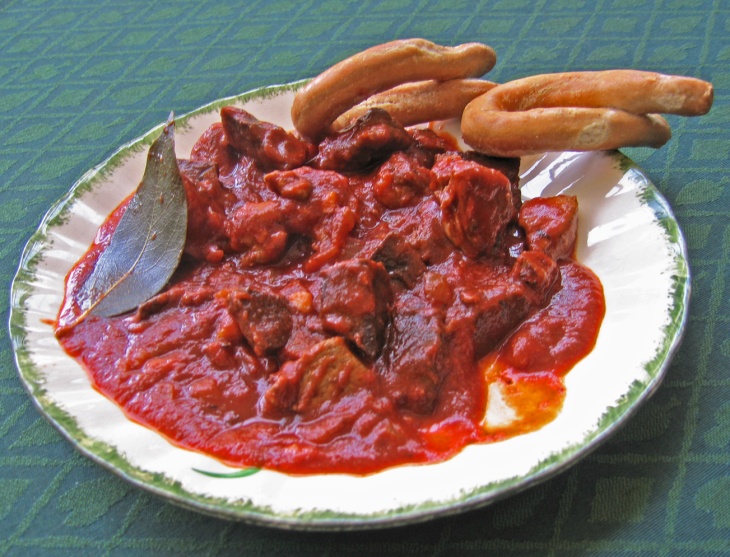 Soufritte
Soufritte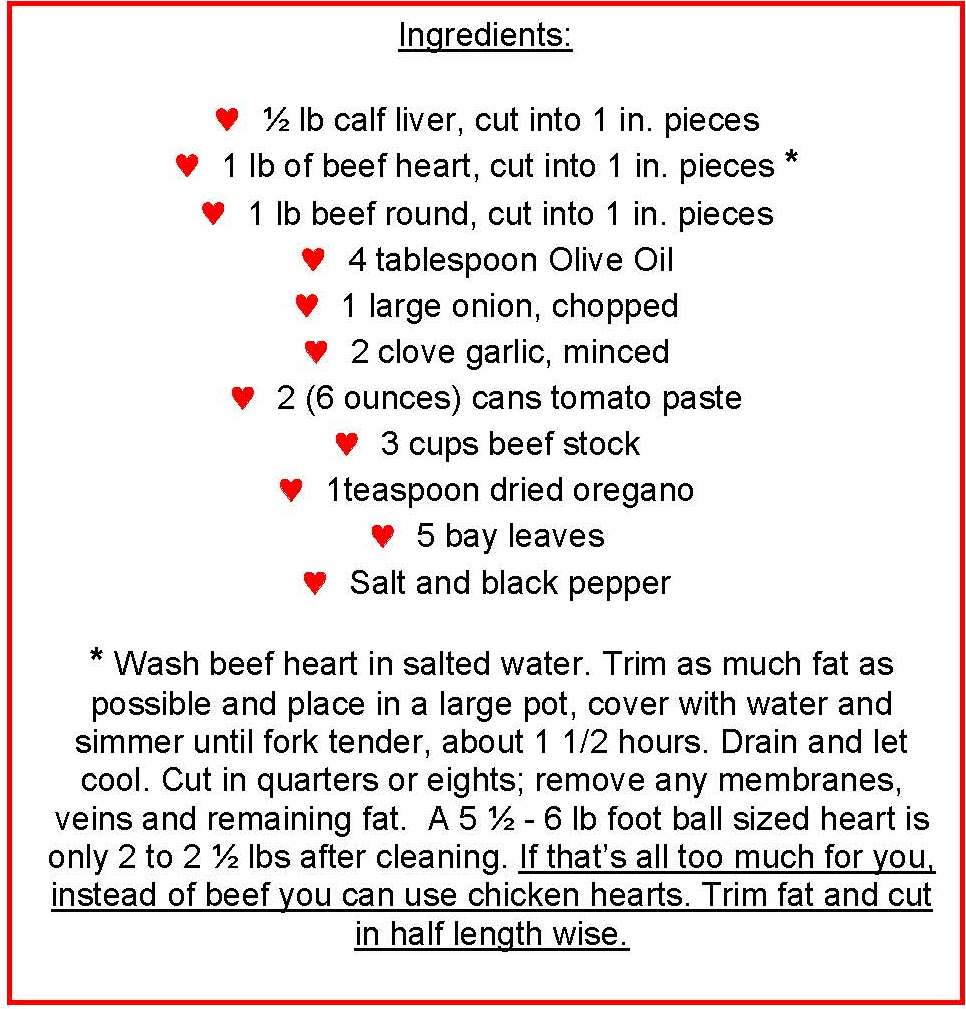 Preparation: Season liver, brown in oil and set aside. Season heart/beef , brown in batches and set aside. Remove any liquid so meat browns and doesn’t steam. Don’t overcook.
Preparation: Season liver, brown in oil and set aside. Season heart/beef , brown in batches and set aside. Remove any liquid so meat browns and doesn’t steam. Don’t overcook.
Cast iron is one of the oldest and best materials for cooking. If seasoned properly it’s as non-stick as any of the modern coated pans. It holds heat well and spreads it evenly and can be used both on the stove or in the oven. If you get a new one that’s not pre-seasoned, it’s simple enough to season it yourself. Pre-heat your oven to 350 degrees. Coat the cooking surface of the pan with a thin layer of Crisco and put it in the oven, upside down, for 1 hour. Put a foil covered baking sheet under it to catch any drippings. Let it cool in the oven for about another hour and it’s done. If it’s sticky, heat it for another ½ hour. If it’s not an even coat, do the whole process again. Sound like a lot of work? Don’t worry because you’ll only have to do it once.
To clean it after use you usually have to just wipe it with a wet sponge (no soap) and if anything sticks, simply fill it with hot water and let it soak for a while then clean it with a brush, never steel wool. Dry it and it’s ready for its next use.
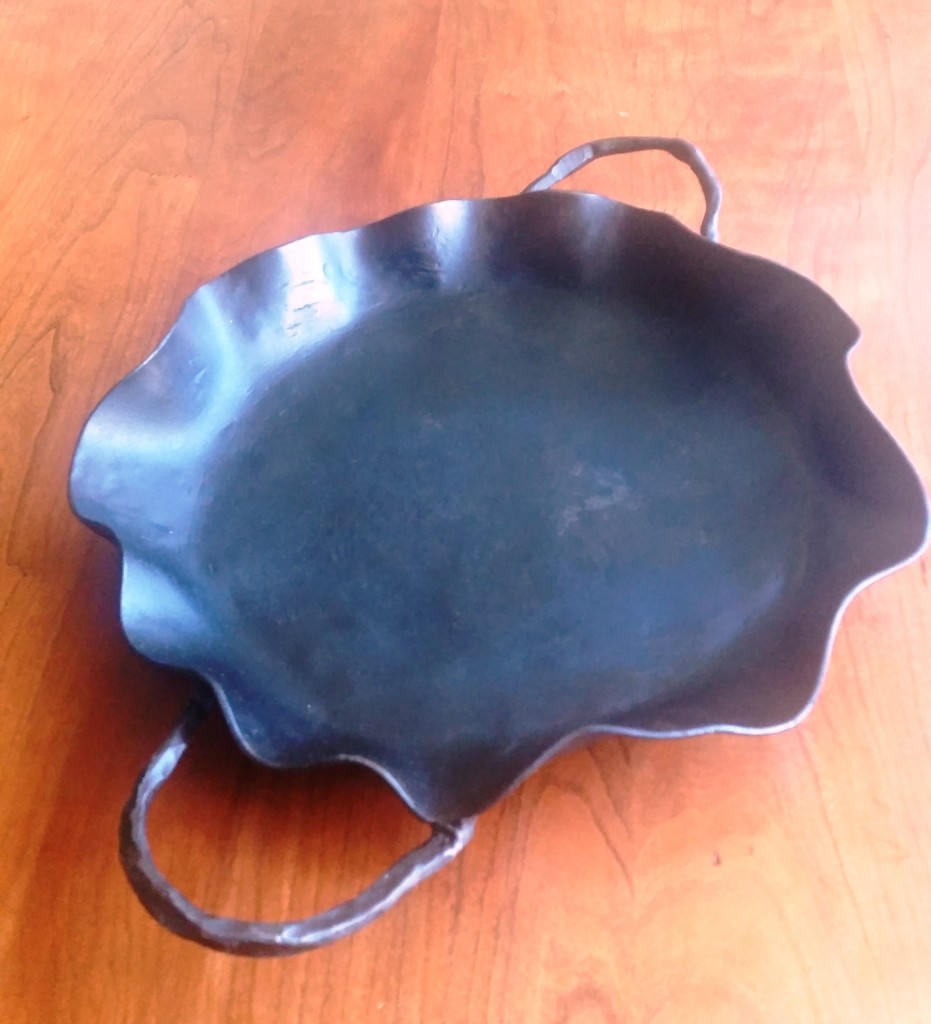
My daughter, Kristina recently gave me a new pan. At first I thought it was just a decorative cast iron serving platter and although it’s attractive, it turns out that it’s also very utilitarian. It’s creator calls it a “ten inch pie pans with handles.” I don’t often bake pies but so far I’ve used it for chops, omelets and skillet corn bread. It’s lighter than my standard 10 inch cast iron pan, it makes a better serving presentation and it came pre-seasoned – a big plus. It’s made by Marsha Trattner, an artist-blacksmith in Red Hook, Brooklyn. She makes other things in addition to pans. Take a look at her web site: She-Weld.com 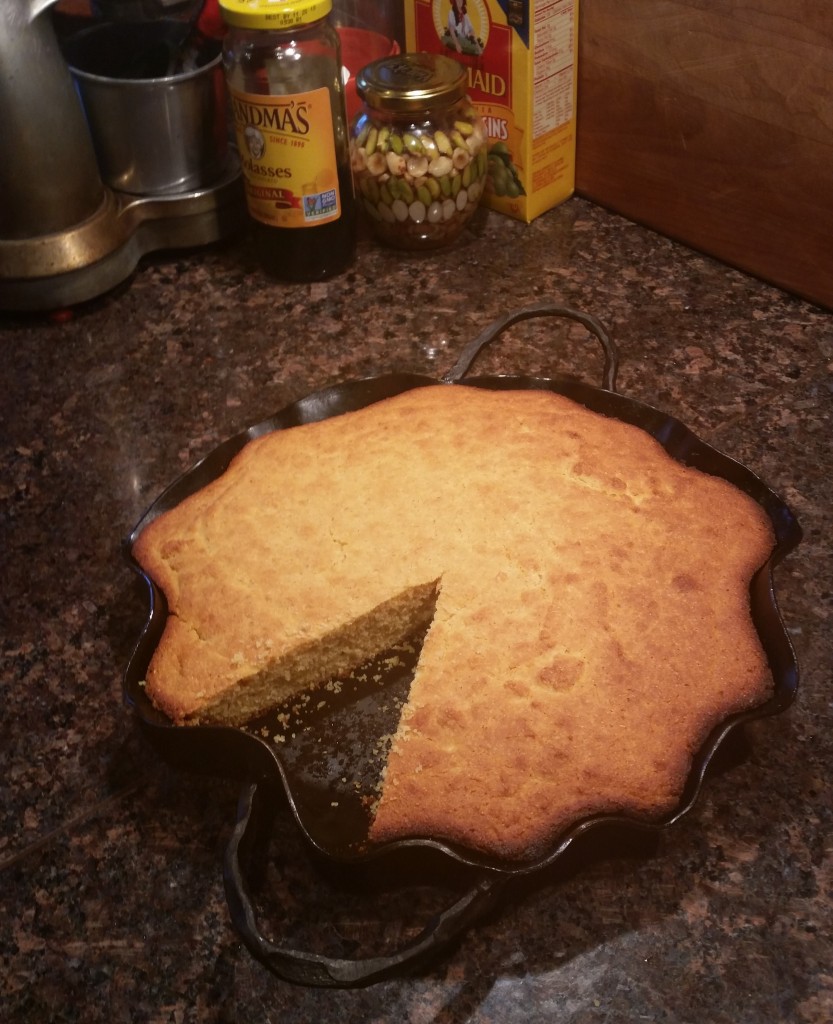
One last cast iron utensil… I got it at a flea market for $20. A Dutch oven old enough to probably have been used in a fire place. Not very pretty and extremely heavy, it’s still the greatest for stews.
Minestra and Zuppa
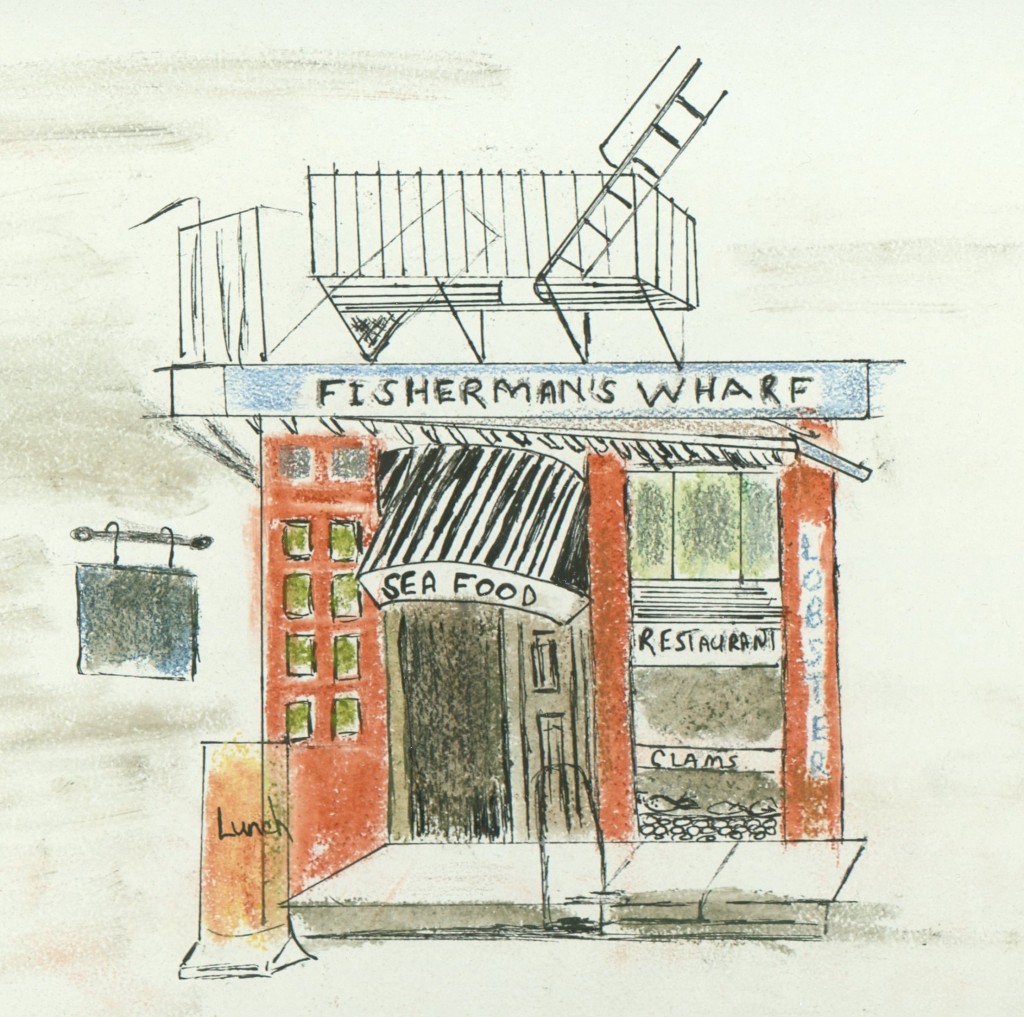
< Minestra >
Basically, minestra is soupy pasta with vegetables. The vegetables can include broccoli, cauliflower, cecis, peas, lentils, beans or greens. The pasta is usually small, like tubes, shells or even broken spaghetti. The ingredients and combinations are up to you. An example of minestra is Pasta e Patate or the following pasta with escarole and beans from my sister Nicki. (If you need to distinguish between the soupy minestra pasta and pasta with say, tomato sauce or pesto, those are known as pasta asciutte, ‘dry pasta’ although it’s covered with sauce.)
Pasta con Scarola e Fagioli
On a cold winter night nothing warms you up like a bowl of minestra. It’s hearty, delicious and easy to prepare. My Mother served soup at every meal. This minestra was and still is one of my favorites.
Ingredients:
Preparation:
Clean the escarole in cold water and cut into ½” strips. Set aside. Heat the olive oil in a 3 quart pot add the garlic cloves and remove them when they are brown and soft. Add the ham hocks to brown. Add water to cover the hocks and bring to a boil. Lower the heat and simmer for about a half hour to forty-five minutes. Add the escarole and cook until softened about 15 minutes. Then add the rinsed cannellini beans and pasta. Cook until the pasta is done – about 10 minutes.
< Zuppa >
Zuppa is a broth which never includes pasta and usually has a slice of bread or biscotti in it. An example of this follows as Merlutze en Brode, a recipe from a restaurant, The Fisherman’s Wharf, that our family had in the 1950s. This style of preparation goes back to a time before tomatoes were common in Italian cuisine. Our chef, Michele, was proud of this one – so simple and so good.
Merlutze en Brode
Ingredients:
Preparation:
Lightly sweat the garlic in oil. Add salt, black pepper and ½ of the parsley. Cut the whitings into 5 pieces each, including head and tail, add to pot and just cover with hot water. Remove the head and tail when they get soft. Continue simmering until the skin becomes loose enough to remove and you can lift out the spine and bones from the pieces of fish. Add more water if it gets too dry. Add the rest of the parsley just before serving. Put some bread or fruzalle in a bowl and cover with the fish broth.
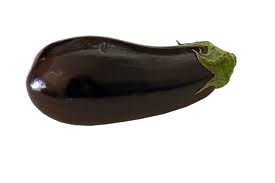 Eggplant Parmigiana (parmigiana di melanzane )
Eggplant Parmigiana (parmigiana di melanzane )
This is probably a very different version for most of you. It’s a ‘parmigiana’ recipe with just parmesan cheese, no mozzarella. You can substitute other vegetables or chicken or veal cutlets but no mozzarella. If you look up parmigiana, you’ll see it’s defined as “cooked with Parmesan cheese,” not mozzarella. Give our family recipe (written by my sister Nicki) a try.
It’s light and fresh compared to the parmigiana al ‘Americana you get in most restaurants with that thick rubbery layer of mozzarella on top.
Ingredients:
Preparation:
Remove 3 or 4 strips of skin from the eggplants but leave enough to hold them together. Slice them into rounds and place the slices into a scolo pasta (colander) in layers, sprinkling kosher salt on each layer. Place a heavy plate and a 28 ounce can of tomatoes (you can use any kind of weight but what could be better than a can of tomatoes?) on top for weight and set the scolo pasta in the sink for about ½ hour.
After the eggplants have drained, squeeze out the excess water and dredge the slices in the flour and salt and pepper mixture. Fry the slices in olive oil until browned on both sides. Drain on paper towels. Coat a baking dish (I prefer a high round dish) with a ladle-full of marinara sauce, then a layer of eggplant and a generous sprinkling of cheese topped with another ladle-full of sauce and some torn basil leaves. Repeat this process until you finish the eggplant. Bake in 350 degree oven for 30 – 45 minutes or until bubbly. Serve with a sprinkle of fresh basil.
Note: Marinara Sauce – Not all Italian tomato sauce is Marinara sauce. This 3 ingredient sauce (not counting salt and pepper) is simple enough to make on a small fishing boat, hence the name – mariner. This sauce has multiple uses: delicious with pasta (we used to have this meatless sauce when we were kids on Friday nights when meat was not an option), the perfect sauce for eggplant parmigiana, eggs in purgatory, etc.
¼ cup olive oil
3 cloves garlic (cut in large pieces so they can easily be removed)
1 ½ lbs of fresh tomatoes or 1 28oz con of crushed San Marzano tomatoes
Salt, black pepper and red pepper flakes to taste
Lightly brown garlic in the olive oil. Add about a pound and a half of chopped fresh or one large can of crushed tomatoes (approx. 28 oz.). Add salt, black pepper and red pepper flakes. Simmer ½ hour on medium heat and it’s done.
One last note – I have nothing against mozzarella. I love it fresh and cold, especially on a sandwich with ripe tomatoes and salt and pepper. I just think it’s been overused by cooks in Italian-American restaurants to the point where non-Italians think that’s the way all Italians eat. And it isn’t.
It you can’t get it fresh, try making your own – Ricki’s 30 Minute Mozzarella
The Heidelberg Restaurant
The Bavarian Inn, Café Geiger, Kline Konditori, the Berlin Bar and many others are gone. The last man standing is the Heidelberg Restaurant. It’s the only German restaurant left in what used to be New York City’s ‘Germantown’ on the Upper East Side. Times change and neighborhoods evolve but I’m glad the Heidelberg is still the same. The construction of the Second Avenue subway is disrupting businesses along its route. Many couldn’t handle it and closed their doors. Fortunately the Heidelberg is weathering the storm. I went for lunch one day toward the beginning of the subway project and saw construction trailers installed in front of the restaurant. When I got to the door there was a disheartening sign saying ‘Closed for Renovation.’ I was afraid that was the end of my favorite German restaurant. But no, when I went back a month later they were open and except for some fresh paint and new tables, no real change. The menu was the same with its wursts and schnitzels, and beer, oh what beer!
One of my favorite meals for a group of six or so is the Stammtisch – “House Table Plate.” It includes:
Blutwurst, Leberwurst, Black Forest bacon, Bratwurst, Kasseler Rippchen, Tongue, Leberkäse, and Schweinshaxe. Served with boiled potato, potato pancake, sauerkraut, and red cabbage
If you go during the day when their neighbor Schaller & Weber’s German butcher is open and you order steak tartar, the chef will go next door and have them grind the sirloin fresh. They also have an extensive dessert selection, very good coffee and a variety of schnaps for after dinner.
Pasta e Patate (pasta and potatoes)
This is just about the height of La Cucina Povera. What’s less expensive and more filling than pasta and potatoes to feed a hungry family? My mother made this fairly often because it was a family tradition but would never serve it to guests – it wasn’t good enough. She pronounced it in Napolitano dialect as basta badon. It’s really a minestra, that is, sort of a soupy pasta with vegatables.
A quarter pound of meat for a little protein and extra flavor – some parsley to give a bit of color to a white on white dish, and there you have it. Recently my teenage granddaughter Molly came for dinner with a group of her hungry friends. We served six or seven courses with this as the pasta course. Of course it didn’t have the traditional poverty connotation for them and they said it was their favorite course of the dinner. Food doesn’t have to be expensive to be good.
Ingredients:
Preparation:
Sautee the pancetta and chopped onions until lightly browned. Add the tomatoes and stir until they release their juice. Add potatoes and mix. Cover just barely with water and simmer for 15 to 20 minutes, until the potatoes are almost done. Remove about 1 cup of the soup, puree it and return it to the pot.
Drain the pasta when it is almost done, saving the water. Add the pasta to the soup to finish cooking and also add as much pasta water as you need to make a soupy consistency. Mix in the cheese. Sprinkle with parsley for a little color and serve with additional parmesan cheese.